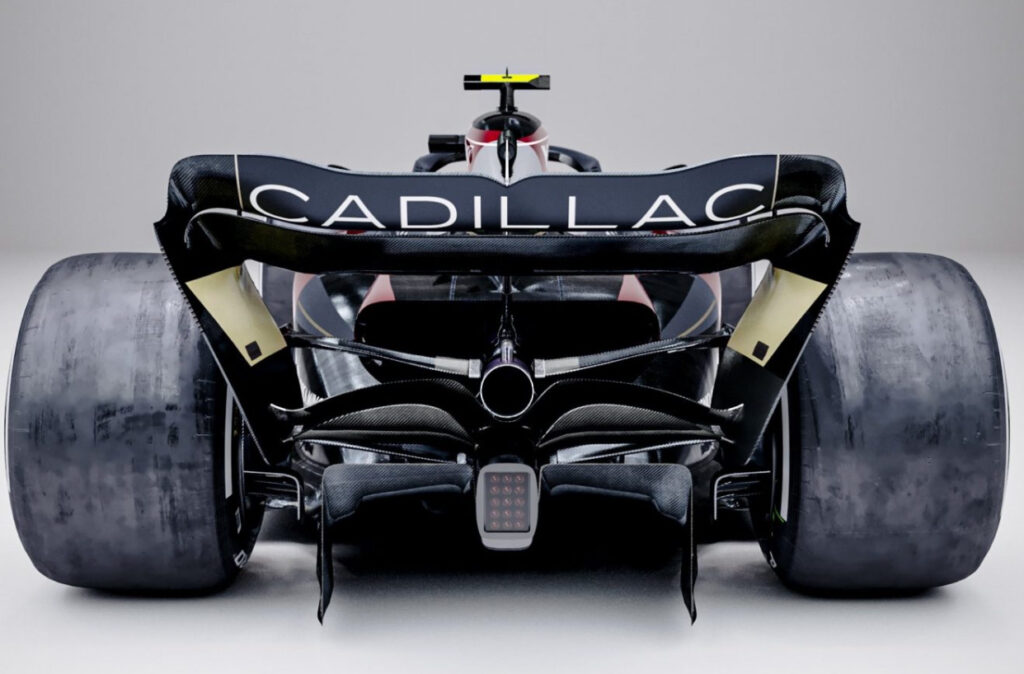In a bold move that signals its ambitions in motorsport, Cadillac has announced plans to develop its own engines for Formula 1 racing. Partnering with Andretti Global, Cadillac aims to field a competitive F1 team by 2026, marking its entry into the world’s most prestigious motorsport competition. The ultimate goal is to transition into a full works F1 team, leveraging its engineering expertise and racing pedigree to compete at the highest level.
This announcement comes amid increasing interest in the expansion of F1, both in the United States and globally, with Cadillac poised to bring a uniquely American presence to the grid. Here’s an in-depth look at Cadillac’s F1 aspirations, its partnership with Andretti, and what this means for the sport and the automaker.
Cadillac and Andretti: A Partnership to Watch
Cadillac’s foray into Formula 1 is part of a partnership with Andretti Global, the motorsport powerhouse led by Michael Andretti. The collaboration aims to combine Cadillac’s engineering expertise and Andretti’s racing experience to create a competitive F1 operation.
A Shared Vision
Both Cadillac and Andretti share a vision of excellence in motorsport. Andretti’s existing success in series like IndyCar and Formula E provides a solid foundation, while Cadillac’s innovation in performance engineering adds a crucial element to the partnership. Together, they aim to build a team capable of competing with F1’s established powerhouses.
Building From the Ground Up
Unlike many other teams that rely on third-party power units, Cadillac plans to design and manufacture its own engines. This decision underscores Cadillac’s commitment to becoming a fully integrated works team. By controlling every aspect of engine development, the team can ensure their power units align perfectly with their car designs, offering a competitive edge on the track.
Why Enter F1 Now?
Cadillac’s decision to enter Formula 1 is both strategic and timely. Here are some of the key factors driving this move:
Formula 1’s Growing Popularity in the U.S.
The United States has seen a surge in F1 interest, thanks in part to Netflix’s Drive to Survive and the addition of races like the Miami Grand Prix and the upcoming Las Vegas Grand Prix. Cadillac’s entry capitalizes on this momentum, appealing to a growing American fanbase.
The 2026 Engine Regulations
F1’s new engine regulations, set to take effect in 2026, emphasize hybrid technology and sustainability. Cadillac’s expertise in electric and hybrid powertrains positions it well to develop competitive engines under these rules.
Expanding the Cadillac Brand
Competing in Formula 1 aligns with Cadillac’s broader efforts to reposition itself as a global luxury and performance brand. An F1 presence can elevate its profile, particularly in key markets like Europe and Asia.
Developing a Competitive Engine
Building a competitive F1 engine from scratch is no small feat. It requires advanced technology, significant investment, and a team of skilled engineers. Cadillac has a strong foundation in performance engineering, thanks to its success in endurance racing with the Cadillac V-Series.R program, but Formula 1 represents an entirely new challenge.
Key Features of the 2026 Power Unit Regulations
The new regulations emphasize sustainability and cost control while maintaining F1’s performance standards. Cadillac’s engine will need to meet the following criteria:
•50/50 Hybrid Split: Equal power output from the internal combustion engine (ICE) and electric motor.
•100% Sustainable Fuels: A commitment to running engines on fully sustainable fuels to reduce carbon emissions.
•Cost Cap: Adhering to strict financial limits for engine development.
Leaning on Expertise
To tackle this challenge, Cadillac will likely assemble a team of experienced engineers, including talent from within its parent company, General Motors. Collaborations with existing F1 suppliers and Andretti’s technical partners may also play a role in the development process.
Challenges Ahead for Cadillac in Formula 1
While Cadillac’s ambitions are commendable, its journey to F1 success will not be without challenges:
Meeting Performance Standards
Competing with established teams like Mercedes, Ferrari, and Red Bull will require Cadillac to deliver a power unit that matches or exceeds their performance. This demands cutting-edge technology and flawless execution.
Navigating FIA Approval
Cadillac and Andretti’s bid to join Formula 1 must still gain approval from the FIA (Fédération Internationale de l’Automobile). Existing teams have expressed concerns about grid expansion, citing financial and logistical implications.
Building a Team Infrastructure
Creating a competitive F1 team involves more than just engine development. Cadillac and Andretti will need to establish a robust infrastructure, including a state-of-the-art factory, wind tunnel facilities, and a skilled workforce.
Balancing Costs
While F1 has introduced cost caps, developing a new engine and team from scratch still requires substantial investment. Cadillac must balance its ambitions with financial prudence to ensure long-term sustainability.
What Cadillac Brings to Formula 1
Despite the challenges, Cadillac’s entry into Formula 1 has the potential to benefit both the team and the sport as a whole:
A Strong American Presence
Cadillac’s participation solidifies the growing influence of American companies in F1, joining Haas and Red Bull’s U.S.-based sponsorships. This increased American presence can attract new fans and sponsors to the sport.
Technological Innovation
Cadillac’s commitment to developing its own engines aligns with F1’s emphasis on innovation and sustainability. The lessons learned in F1 could also translate into advancements for Cadillac’s road cars, particularly in hybrid and electric technology.
Increased Competition
A new team with a manufacturer-backed power unit adds excitement to the grid, potentially disrupting the dominance of existing teams and creating more competitive races.
Looking Ahead: Cadillac’s F1 Journey
The 2026 debut marks just the beginning of Cadillac’s Formula 1 journey. Over time, the team will aim to establish itself as a consistent performer, leveraging its expertise and Andretti’s racing pedigree to climb the grid.
Short-Term Goals
•Successfully develop and homologate a competitive power unit.
•Gain approval from the FIA and secure a spot on the 2026 grid.
•Establish a team infrastructure capable of competing with F1’s best.
Long-Term Vision
•Transition into a full works F1 team with complete control over chassis and engine development.
•Compete for podium finishes and, eventually, world championships.
Cadillac’s entry into Formula 1 is a bold and exciting move that has the potential to reshape the sport. By building its own engines and partnering with Andretti, Cadillac is positioning itself as a serious contender in the F1 world.
While challenges lie ahead, the combination of Cadillac’s engineering expertise and Andretti’s racing experience offers a promising foundation. If successful, Cadillac’s F1 venture could elevate its global brand, attract new fans to the sport, and add a fresh dimension to Formula 1’s competitive landscape.
As the team gears up for its 2026 debut, all eyes will be on Cadillac to see if it can deliver on its ambitious vision and make its mark in the pinnacle of motorsport.
No comments yet.








